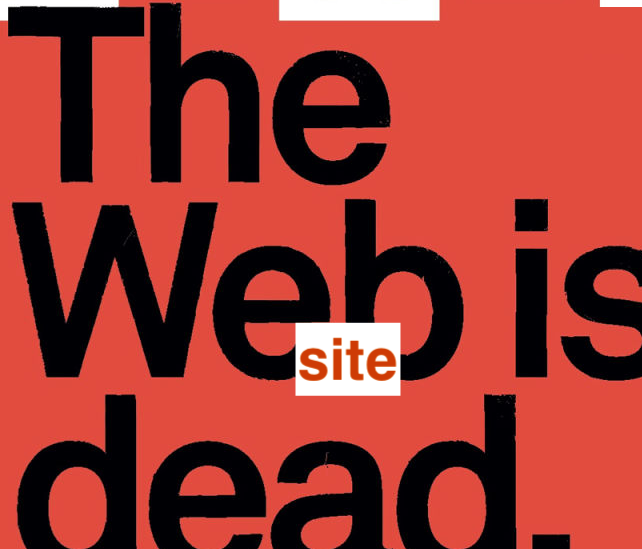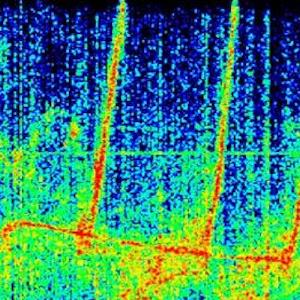An overwhelming part of contemporary art and multi-media (film, music, sound, animation, graphic art etc) is produced and stored in the digital domain. The efficiency as well as its ease of use, has lead to the digitisation of audio and video across systems, cultures and languages. The work of a digital artist, specifically also of an electronic musician, is typically bound to a complex ecosystem of commercial and DIY hardware and software. The termination of one format, can set off a chain reaction, of obsolescence within the entire production system, leading to the acquisition of new technology and know-how. To say it simply, Mp3 replaced WAV replaced Compact Discs replaced Cassettes replaced Vinyl replaced Reel replaced Phonographs. At every step, aspects of history, aesthetics and quality were junked in favour of efficient cost-effective industry-formats, which were consequently embraced by artists and distributors as the 'best-format-of-the-day'. Remember"Video killed the radio star"? Consequently the internet killed the video-star and Mp3 is a bit of "moral poverty" and so on..."
Sounds recorded as early as 1882 can be heard today on Wikipedia or YouTube, more than a hundred years later. The sounds migrated over time, through various mediums and generations, albeit loosing it's original form. Today it exists, yet inside a codified universe (digital) of 0's and 1's. Most of it is barely audible today, having lost much of it's material embodiments. Hundreds of millions of recordings are subject to deterioration over time, demanding 'data migration' for successful preservation. That deterioration is not because of audio technology, which clearly has risen every decade, in terms of fidelity, rate of reproduction, distribution, access and speed of transfer.
William Basinsky, pioneer ambient music composer contemplated about the decay and obfuscation of sounds in his 4 part album 'The Disintegration Loops'. However the current discourse is not about resurrecting formats based on nostalgia, fetish for retrosonic objects or techno-primitivism. The deterioration happens every time we move from one format or form of output to another. Be it the case of compact discs replacing cassettes in the mid 1980s, or cassettes making a 'nostalgic comeback' in 2010 - But for every cassette there were millions of Mp3 files. The term 'lossless audio' is a myth. The deterioration is not just about quality of sound, but also about the stockpiles of forgotten, junked or many unusable formats. How to listen to an ADAT from 1995 or a two-inch reel from 1965? For that matter, what will happen to the universal Mp3 format by the year 2121? Wonder what will become of our music, once Soundcloud, Apple Music and Youtube are finished? Are we heading into a future with a constant rotting past? Like we observe in nature, sound also decays and deteriorates. How do we embrace this rot? And as sound is a part history, what can be done to preserve and create access to audible history of every kind?
William Basinsky, pioneer ambient music composer contemplated about the decay and obfuscation of sounds in his 4 part album 'The Disintegration Loops'. However the current discourse is not about resurrecting formats based on nostalgia, fetish for retrosonic objects or techno-primitivism. The deterioration happens every time we move from one format or form of output to another. Be it the case of compact discs replacing cassettes in the mid 1980s, or cassettes making a 'nostalgic comeback' in 2010 - But for every cassette there were millions of Mp3 files. The term 'lossless audio' is a myth. The deterioration is not just about quality of sound, but also about the stockpiles of forgotten, junked or many unusable formats. How to listen to an ADAT from 1995 or a two-inch reel from 1965? For that matter, what will happen to the universal Mp3 format by the year 2121? Wonder what will become of our music, once Soundcloud, Apple Music and Youtube are finished? Are we heading into a future with a constant rotting past? Like we observe in nature, sound also decays and deteriorates. How do we embrace this rot? And as sound is a part history, what can be done to preserve and create access to audible history of every kind?
Addressing this mostly unspoken facet of audio technology, a response was founded in Vienna recently. Rotting Sounds is an artistic and academic initiative funded by PEEK (Programme for Arts-based Research), managed by the Austrian Science Fund (FWF). The Rotting Sounds website reads "our project of artistic research investigates the causes, processes and ramifications of degradation and technological obsolescence within the domain of digital audio... We hope to open up a discussion on the present condition of digital media arts, and about strategies for regaining control of artistic means of expression in the field." This goes beyond traditional norms of audio preservation. Rotting Sound's ongoing projects are about giving pertinent knowledge and means to encounter digital deterioration in a constructive fashion. They say that "the inevitable is no longer a source of irritation but rather an aesthetic benefit." Co-founded in Vienna by Thomas Grill, Till Bovermann and Almut Schilling, Rotting Sound in a nutshell is about "embracing the temporal deterioration of digital audio". Yet there is much more going on under the hood. Not seen often, an initiative that puts technology and it's practices in the public domain. The dialogue is also insisting about creating self-empowerment and independence for digital artists, from commercial and technical constraints. It's ok to sacrifice technology instead of history and art. The founders emphasise that "Since degradation cannot be avoided in principle, it is our general aim to unearth latent degrees of freedom, pertaining to the artistic practice in the omnipresence of decay..."
If your an artist interested in the preservation of sound and contributing to the current discussion head to https://rottingsounds.org/
Photo and Audio Spectrum by Rotting Sounds





























0 -